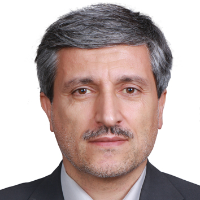Explaining the Role of Mosques in Improving the Quality of Life for Neighborhood Residents in Iranian-Islamic Cities (Case Study: Husseiniyah A’azam in Husseiniyah Neighborhood, Zanjan)
Today, quality of life is the main objective of all types of plans and strategies provided by scientists and planners. Concerns revolving around the quality of life is a characteristic of contemporary societies. Given the status quo, the urban quality of life is regarded as the most important subject in urban planning. Meanwhile, one of the important and influential elements in Islamic cities are mosques. During the course of history concerning the formation of Islamic cities, mosques have always been regarded as important public spaces with numerous social, economic, political, and physical functions, playing a pivotal role in people’s lives. Consequently, mosques are known as effective elements of citizens’ quality of life at urban or neighborhood level across Iranian cities. The purpose of the present study is to explain the role of mosques in improving the quality of life in various social, economic, physical, administrative, and environmental structures across neighborhoods in Iranian cities. Therefore, the extent of significant relation between the role of mosques and the aforementioned structures regarding the residents’ quality of life can be analyzed and explained.
Quality of life can be defined as constituting both the quantitative and qualitative aspects such as distribution of goods and services, and humans’ materialistic needs as well as mental and qualitative aspects such as social relationships, life satisfaction, participation, sense of social belonging, and the entire spiritual needs of people.
Accordingly, mosques are the main building blocks of Islam, the most superior function of which includes collective worship and prayer.
Different Types of Mosques According to their Function and Location
In terms of function, three types of mosques in cities can be pointed out (Ataei Hamedani, Hamzehnejad, & Noghrekar, 2011):A) The Grand Mosques: This type of mosque is a place to hold Friday Prayer (Congressional Prayer). Considering the sermons taking place during the Friday Prayer, these mosques play a more prominent role in politics as compared with neighborhood mosques. Finding a proper location for these mosques comparing with the following ones is of great importance. These mosques should be connected to the market and residential neighborhoods.
B) The Neighborhood Mosques: In Islamic societies, these mosques are the most accessible and can be found in every region and urban structure.
C) Marketplace Mosques: These mosques are located in the vicinity of men’s workplace, inside a bazar or other business centers where shopkeepers and others can pray.
The purpose of the present study is to examine and explain the role of mosques in improving the quality of life for neighborhood residents in Iranian cities. In terms of type, the present inquiry is an applied study conducted using the descriptive-analytical method. Data collection was carried out through library studies, while theoretical foundations were gathered using documents and approaches. Furthermore, surveys were conducted by distributing questionnaires as well as conducting interviews with the samples of the study. Criteria and sub-criteria obtained from the theoretical foundations were classified under social, economic, physical, and environmental health structures.
According to the findings of the study, the social indices on quality of life in Husseiniyah Neighborhood, Zanjan with a t-statistic of 4.561 is significantly under the influence of mosques as compared with other indices, while they have not been affected in the context of economic indices involving a t-statistic of 2.462. Subsequently, this is accompanied by other indices including physical-spatial, administrative, and environmental with t-statistics of 4.690, 3.737, and 3.643, respectively. According to path analysis, the administrative, social, and economic indices significantly affect the residents’ quality of life with total impacts of 0.907, 0.892, and 0.880, respectively, while physical-spatial and environmental indices are ranked last with total impacts of 0.810 and 0.864, respectively.
In Iranian-Islamic cities, mosques play a vital role in forming various platforms and enhancing the quality of life across neighborhoods and even at an urban scale. As a public, religious, cultural, educational, and even therapeutic center, the Husseiniyah A’azam Mosque plays a principal role in a lively and dynamic neighborhood. In fact, the presence of mosques in neighborhoods can be regarded as the main propellant of civilization across Iranian-Islamic cities.
It is worth mentioning that the Husseiniyah A’azam Neighborhood is located in the historical and distressed region of Zanjan City. According to field studies and questionnaires completed by the neighborhood’s residents, the mosque has been relatively effective in improving the indices regarding the quality of life in this neighborhood. According to the residents, the neighborhood has a relatively favorable quality of life, while it falls short as compared with neighborhoods which involve high indices of quality of life.
- حق عضویت دریافتی صرف حمایت از نشریات عضو و نگهداری، تکمیل و توسعه مگیران میشود.
- پرداخت حق اشتراک و دانلود مقالات اجازه بازنشر آن در سایر رسانههای چاپی و دیجیتال را به کاربر نمیدهد.


